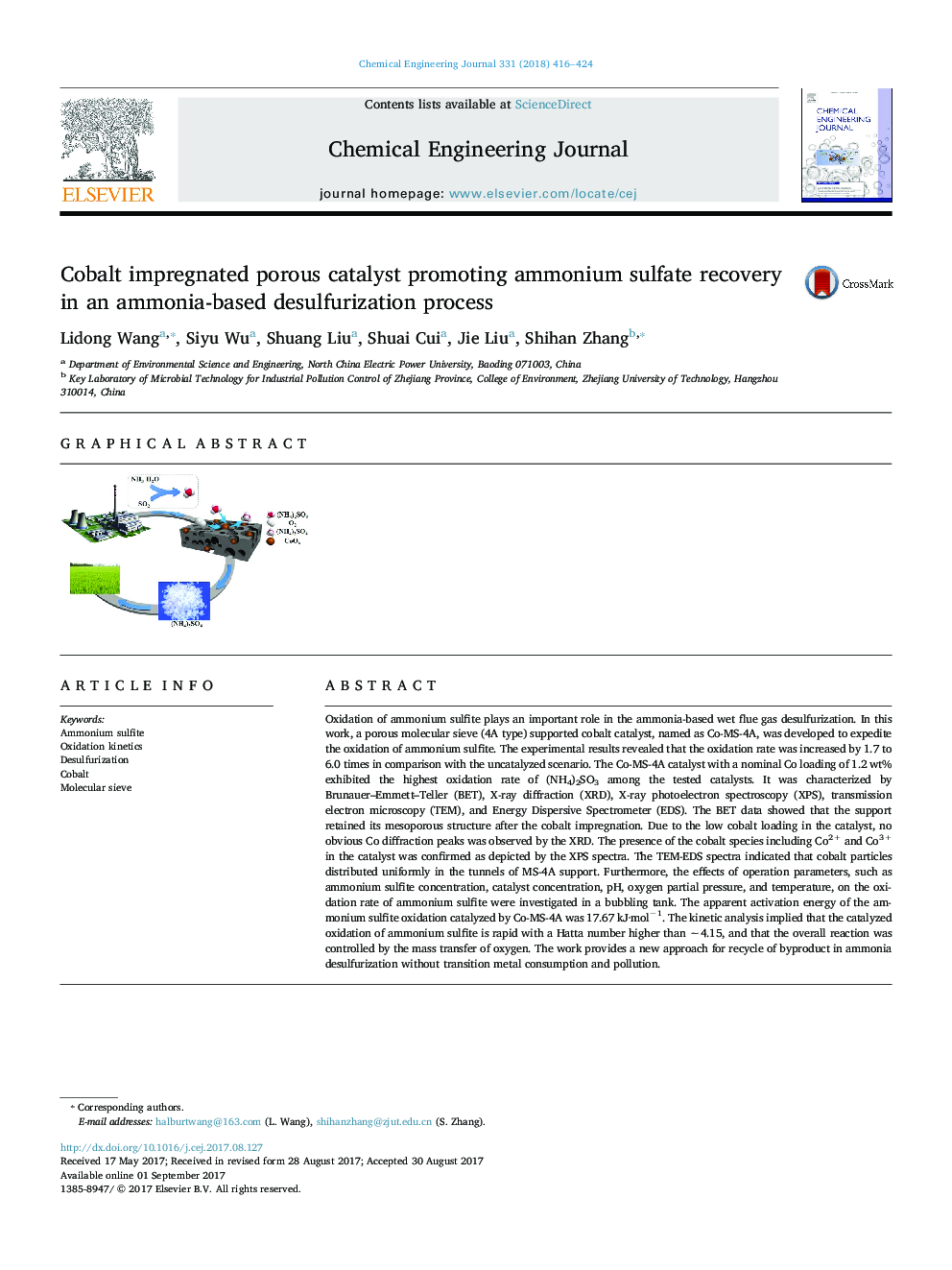| Article ID | Journal | Published Year | Pages | File Type |
|---|---|---|---|---|
| 4762796 | Chemical Engineering Journal | 2018 | 9 Pages |
â¢Cobalt supported molecular sieve catalyst (Co-MS-4A) was prepared to promote (NH4)2SO3 oxidation.â¢Co-MS-4A exhibited better catalytic performance than the aqueous cobalt ions.â¢The catalyzed oxidation of ammonium sulfite is rapid with a Hatta number over â¼4.15.â¢The overall reaction was controlled by the mass transfer of oxygen.
Oxidation of ammonium sulfite plays an important role in the ammonia-based wet flue gas desulfurization. In this work, a porous molecular sieve (4A type) supported cobalt catalyst, named as Co-MS-4A, was developed to expedite the oxidation of ammonium sulfite. The experimental results revealed that the oxidation rate was increased by 1.7 to 6.0 times in comparison with the uncatalyzed scenario. The Co-MS-4A catalyst with a nominal Co loading of 1.2 wt% exhibited the highest oxidation rate of (NH4)2SO3 among the tested catalysts. It was characterized by Brunauer-Emmett-Teller (BET), X-ray diffraction (XRD), X-ray photoelectron spectroscopy (XPS), transmission electron microscopy (TEM), and Energy Dispersive Spectrometer (EDS). The BET data showed that the support retained its mesoporous structure after the cobalt impregnation. Due to the low cobalt loading in the catalyst, no obvious Co diffraction peaks was observed by the XRD. The presence of the cobalt species including Co2+ and Co3+ in the catalyst was confirmed as depicted by the XPS spectra. The TEM-EDS spectra indicated that cobalt particles distributed uniformly in the tunnels of MS-4A support. Furthermore, the effects of operation parameters, such as ammonium sulfite concentration, catalyst concentration, pH, oxygen partial pressure, and temperature, on the oxidation rate of ammonium sulfite were investigated in a bubbling tank. The apparent activation energy of the ammonium sulfite oxidation catalyzed by Co-MS-4A was 17.67 kJ·molâ1. The kinetic analysis implied that the catalyzed oxidation of ammonium sulfite is rapid with a Hatta number higher than â¼4.15, and that the overall reaction was controlled by the mass transfer of oxygen. The work provides a new approach for recycle of byproduct in ammonia desulfurization without transition metal consumption and pollution.
Graphical abstractDownload high-res image (62KB)Download full-size image
